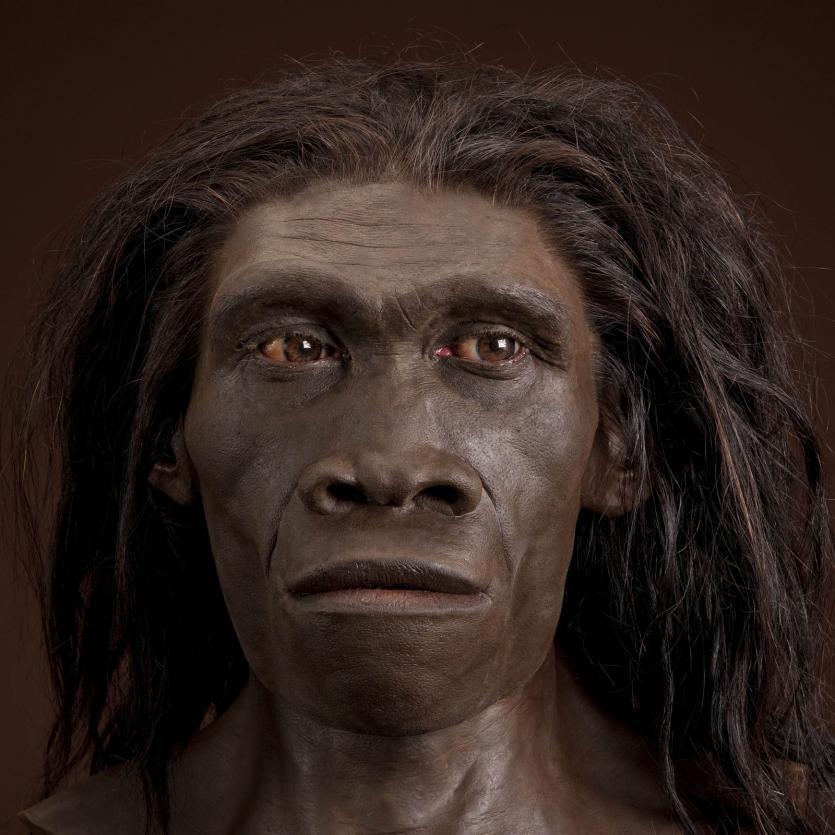Homo Erectus – Anthropology Notes – For W.B.C.S. Examination.
হোমো ইরেক্টাস – নৃবিদ্যা নোট – WBCS পরীক্ষা।
In the 1890s CE, fossils found by Eugène Dubois at the site of Trinil on Java, Indonesia, became the first to be classified as Pithecanthropus (now Homo) erectus. From that point on, many more Homo erectus fossils were found in Indonesia and then China, and from the 1960s CE on they were recognised in Africa. They most likely descended from an earlier species of Homo (most commonly thought to be Homo habilis), in East Africa or possibly Eurasia. Some part of this very widely spread species is thought to have given rise to later species such as Homo heidelbergensis, who are seen as connected to our own species of Homo sapiens.Continue Reaading Homo Erectus – Anthropology Notes – For W.B.C.S. Examination.
The problem is, however, that the fossils that have been assigned to Homo erectus span an almost ridiculous amount of both time and space and show huge variations when they are all taken together. The question is whether they can actually be classified as one coherent species, or whether things should instead be narrowed down a bit further.
On the one hand, there are those who argue for a broad, single-species model (Homo erectus sensu lato), encompassing all or almost all fossils from Southeast Asia to Africa that have been chucked into this group so far. In this view, the variation falls within the range of an otherwise cohesive species, and might be due to the adventurous, globe-trotting nature of this species, with time and space impacting on their physiques. This broad definition is so convenient, though, that it becomes tempting to toss every new fossil find that seems to somewhat match the characteristics of erectus in with this bunch – which is obviously not necessarily an ideal way of going about things.
On the other hand, however, a narrower definition has been suggested that excludes either all of the African fossils, or at least the portion found at Koobi Fora, because they are quite a bit different and might be cohesive enough in their own right to be named Homo ergaster instead. Ergaster is then seen as the species that is linked with the lineage leading to Homo sapiens, whereas Homo erectus sensu stricto (in the strict sense, so only the Asian part) may have been a dead end.
This discussion will no doubt continue to rage for some time yet – perhaps we just do not have all the pieces of the puzzle that are needed to disentangle this mess. At the moment, the verdict that seems to prevail is that the characteristics of the fossils do not present enough evidence to overturn the single-species hypothesis – so Homo erectus in the broad sense prevails. However, a word of caution must accompany this: just because erectus may have been this varied does not mean it should become a ‘wastebin’ species, with any and all fossils that do not seem to fit anywhere else simply being assigned to Homo erectus.
Geographical spread
Fossils assigned to the broad definition of Homo erectus are found all the way from Southeast Asia to Africa. Areas and sites include Trinil on Java, Indonesia; China (‘Peking Man’); Eurasia including Georgia, where finds at Dmanisi are so puzzling they seem to blur the lines between Homo habilis, Homo rudolfensis, and Homo erectus, and might even end up qualifying as a distinct species (Homo georgicus); East Africa (sites at for instance Olduvai Gorge and in the Turkana Basin in Kenya); as well as North- and South Africa. Some finds in western Europe have also at some point in time been lumped into the Homo erectus party, but there is now fairly broad agreement that most of these forms are better matches with Homo heidelbergensis.
What did they look like?
Homo erectus was both bigger and smarter than earlier humans. Their skeletons were basically pretty similar to ours – essentially modern – although they were stockier. They were the first humans to have limb and torso proportions along modern human lines, which allowed them to walk upright on two feet (hence the name) and literally trot the globe, and they had lost the climbing adaptions that allowed earlier humans to play Tarzan.
Considerably one-upping the earlier Homo habilis, Homo erectus not only had a visibly bigger brain than those before them, but it also grew larger as time increased. Early members of this species have cranial capacities between 600-800 cm3, but most later Homo erectus exceed 1000 cm3, which falls within the lower range seen in our own species. They had heavy brow ridges and a low cranial vault (so a more sloping head, without a proper forehead), and their teeth were already a lot smaller and more slender than those of earlier humans.
Our own publications are available at our webstore (click here).
For Guidance of WBCS (Exe.) Etc. Preliminary , Main Exam and Interview, Study Mat, Mock Test, Guided by WBCS Gr A Officers , Online and Classroom, Call 9674493673, or mail us at – mailus@wbcsmadeeasy.in
Visit our you tube channel WBCSMadeEasy™ You tube Channel
Please subscribe here to get all future updates on this post/page/category/website



 +919674493673
+919674493673  mailus@wbcsmadeeasy.in
mailus@wbcsmadeeasy.in






































































































